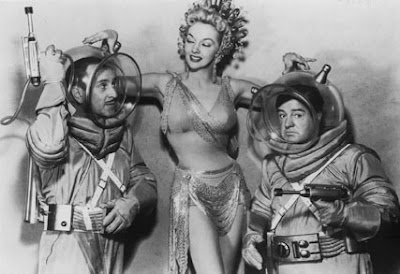
Ten years ago, the phrase "little seen documentary" was completely redundant. Documentaries are made on shoe string budgets compared to feature films and usually play in small art houses only in major cities if they can find any distribution beyond the film festival circuit. In the last decade, the budgets of documentaries have not increased dramatically but the upside for success is now very different. A successful documentary like Fahrenheit 9/11 or March of the Penguins can bring in box office success that big budget films would be happy to see.
I'm instituting a new feature here at Lotsa 'Splainin' 2 Do called Documentary Tuesday, where I will review documentaries I have seen and enjoyed that did not get a big audience in the theaters. I have set the bar for "little seen" at less than one million dollars in ticket sales. According to Box Office Mojo, the movie Harvard Beats Yale 29-29 made $268,431 in the theaters, so it definitely qualifies.
In 1968, when Harvard met Yale for their big rivalry game late in the season, both teams had perfect records, no losses and no ties. Even with this seemingly equal success, Yale was ranked in the Top 20 teams in the country, a rarity for an Ivy League team, and was heavily favored to win. The movie was made in 2008, and combines footage from the TV broadcast of the game, interviews with the players 40 years after the fact and photos and newsreels from the era to explain the context of the game. The film works as a sports movie and as a historical document showing a moment in time that still has significance to this day.
To outsiders, there hardly seems a nickel's difference between Harvard and Yale. Those are the schools that the rich kids on the East Coast attend, the people who expect to run the country in the future because their daddies run the country right now. The movie makes the case that Harvard vs. Yale that year was part of the class struggle. Instead of being a battle of Massachusetts vs. Connecticut, the film shows the Harvard team had a lot of students from all over the country, many of them working class kids on scholarships. In reality, both teams did. The Harvard coach is portrayed as being detached and the players nearly ran the team themselves. In contrast, the Yale coach Carmen Cozza is given credit by all the players as a great leader of young men.
While many scholarship players are featured, the schools still were and are places of privilege. Though neither is interviewed for the film, Al Gore was at Harvard in 1968 and George W. Bush was at Yale the same year. Both are mentioned, Gore more than Bush because Gore's roommate Tommy Lee Jones was a guard on the Harvard team and is interviewed for the film. The film is filled with brushes with celebrity. Yale's quarterback Brian Dowling, who had never played on a losing team in a football game since he was in the seventh grade, was the ultimate Big Man On Campus, and a cartoon in the Yale newspaper had a character named B.D. that was obviously patterned on him. The strip is written by an undergrad named Garry Trudeau, and to this day, B.D. is a character in Doonesbury, Trudeau's continuation of his collegiate efforts. It's rare that Ivy League players make it on to the pros, but Yale had a running back named Calvin Hill who would have a long and successful career with the Dallas Cowboys. If that weren't enough, one of the Yale players was dating a pretty Vassar undergrad named Meryl Streep.
It's hard to "give away" the end of a movie that tells you the final score of the game in advance, but there is still an excitement that rivals any movie that has an invincible hero. You go to a James Bond movie knowing he will defeat the bad guy, you just don't know exactly how. In the game, Yale outplayed Harvard and built up an early lead, and the Harvard coach benched the quarterback and put in a second stringer Frank Champi, who got his team back in the game. Late in the fourth quarter, Yale still leads 29-13, so some simple math says that Harvard needs to score 16 points to tie, two touchdowns and two two-point conversions. All these plays happened in the last minute of the game, an improbable finish that rivals 'the Heidi game' played by the New York Jets and Oakland Raiders or the famous multi-lateral play that ended the Cal-Stanford game in 1982.
Even people with only a minimal interest in football can enjoy Harvard Beats Yale, 29-29. It's fascinating to listen to men late in their lives recalling their glory days, to remember what it was like in 1968, a time of major social upheaval on many different fronts, from the war and the assassinations to the students occupying university offices, from the civil rights struggle to beginnings of women's lib.
And, oh yeah. There's footage of one heck of an entertaining football game that keeps the narrative moving forward.
If you have Netflix and your computer is set up to use the account, you can download the movie for free. I give it my highest recommendation for anyone who finds any of the topics mentioned here of any interest.


.jpg)









































